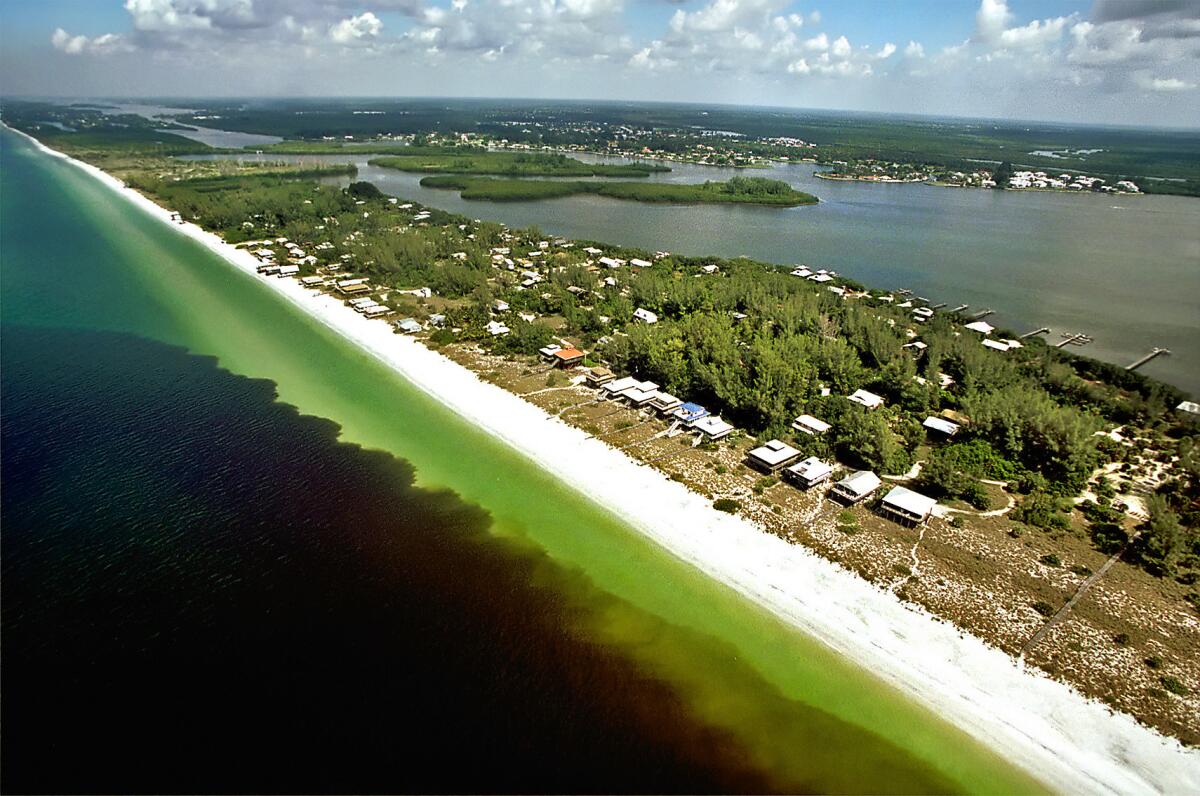Massive ‘Florida red tide’ is now 90 miles long and 60 miles wide

- Share via
There’s a massive red tide blooming off the coast of southwestern Florida and it appears to be growing.
The red tide is patchy, but researchers say it stretches an amazing 60 miles wide and 90 miles long in the Gulf of Mexico.
Just a few weeks ago it was reported to be 50 miles wide and 80 miles long.
Even at its new size it’s not the most colossal bloom recorded in this part of the world, but it is the biggest since 2005, according to Hayley Rutger, a spokeswoman with Mote Marine Laboratory and Aquarium.
“They are part of the natural system of the gulf, so we do get used to seeing them,” she said. “This one is large, but not the largest we’ve ever seen.”
This particular type of red tide, sometimes called “Florida red tide,” occurs when a microscopic algae called Karenia brevis (or K. brevis for short), begins to multiply out of control.
Florida red tides do not seem to be affected by human activity. They have been observed off the Florida coast since the 1700s and usually start between 10 and 40 miles offshore.
But just because they occur naturally doesn’t mean they are no big deal. K. brevis produces a toxin that attacks the central nervous systems of fish, birds, and marine mammals. Already, the Florida Fish and Wildlife Conservation Commission reports that thousands of snapper, grouper, grunts, crabs, bull sharks, lionfish, sea snakes, octopus, and eel have been found dead.
The red tide can also pose a risk to humans. Waves can break up the K. brevis cells, causing them to release their toxins into the air. The airborne toxins are not deadly, but they can be especially irritating to people with asthma or emphysema. And if the winds are right, they can travel as much as a mile onshore. The toxins in the water can also cause some people to develop a skin rash.
This bloom is still 20 miles offshore, but it is on the move. The surface of the bloom region is expected to move south, while the water in the deep regions of the bloom is headed southeast. If no weather system breaks up its trajectory, the red tide could make its way to southwestern Florida’s coast by the end of the month.
Scientists have no safe way of controlling these algae blooms, and it is not clear that they should.
“Because they are naturally occurring, if you try to alter them you could affect other marine life in ways you hadn’t bargained for,” said Rutger. “Trying to affect the bloom in some way is a lot more complicated than you’d want it to be.”
Do you love to learn? Follow me @DeborahNetburn and “like” Los Angeles Times Science & Health on Facebook.







